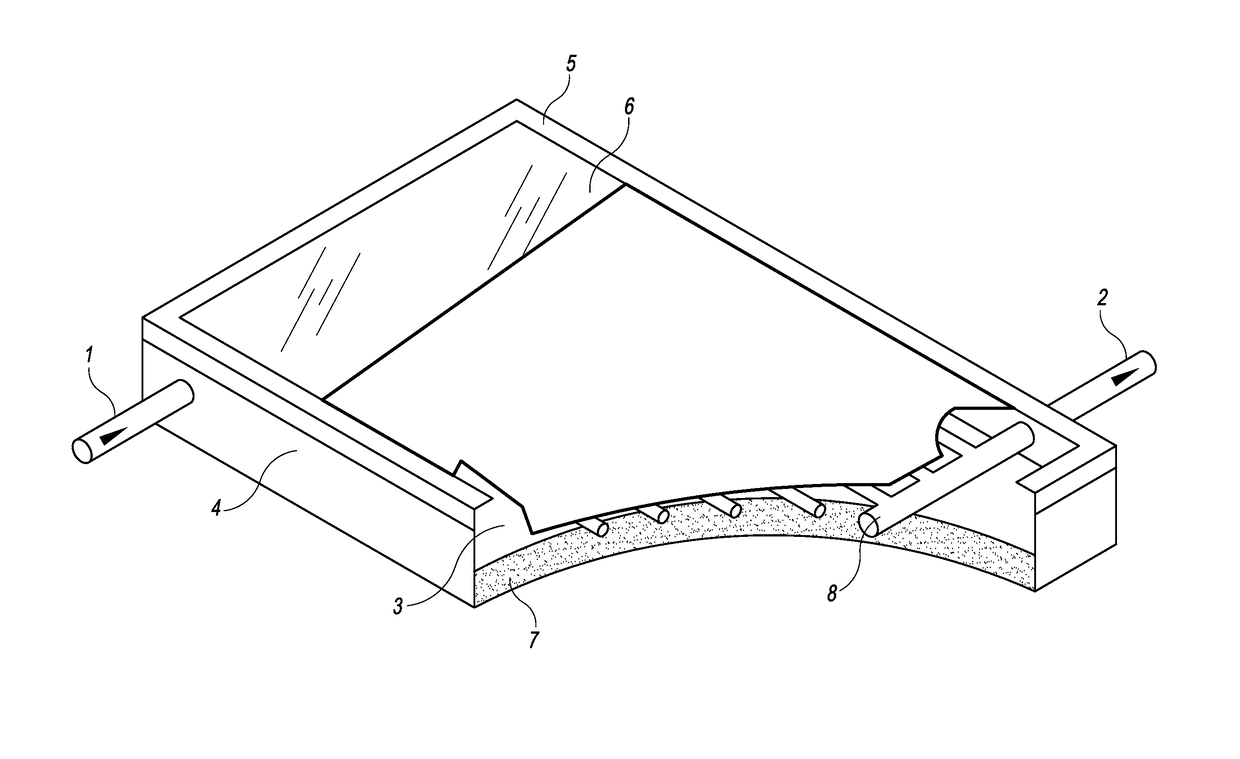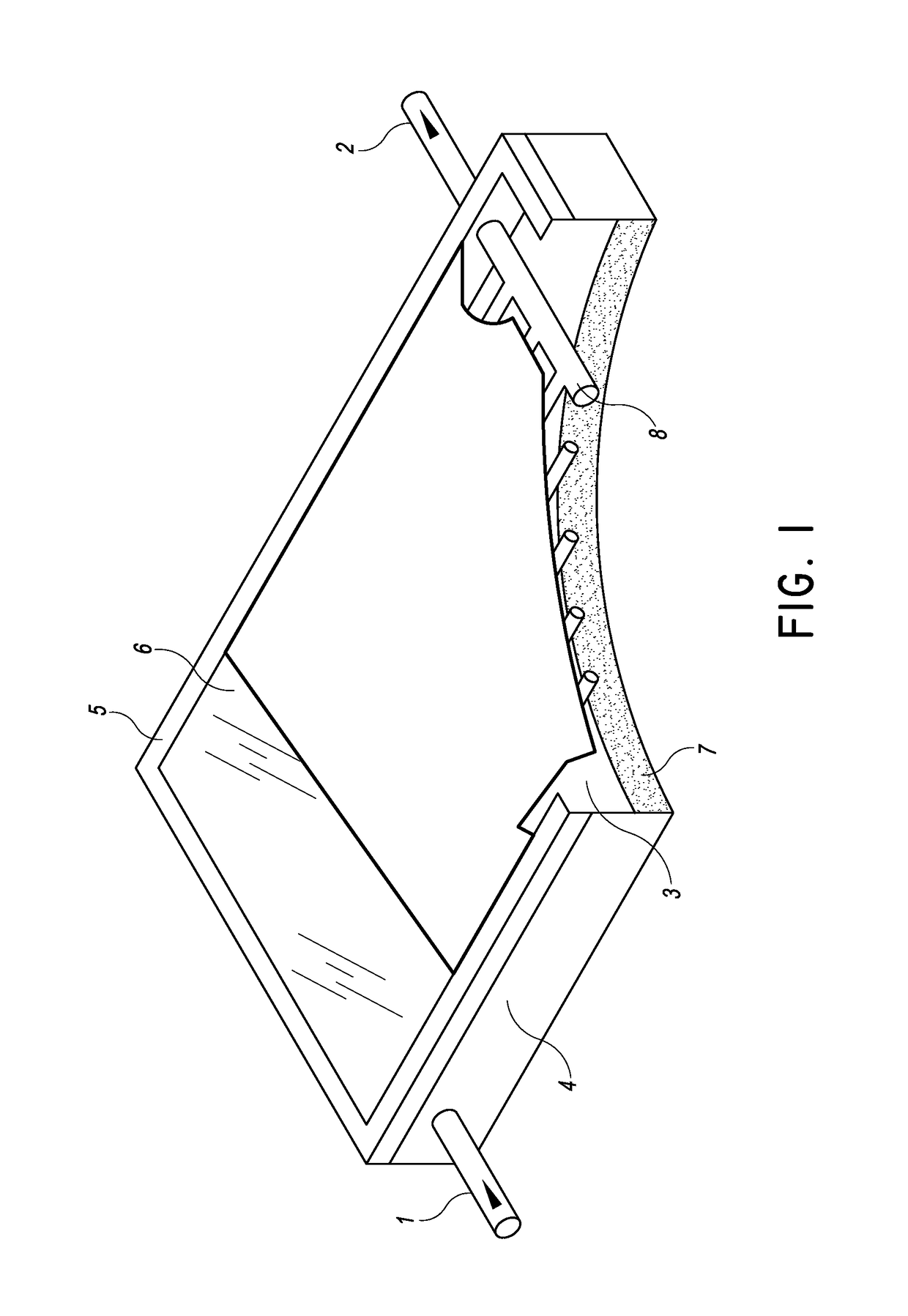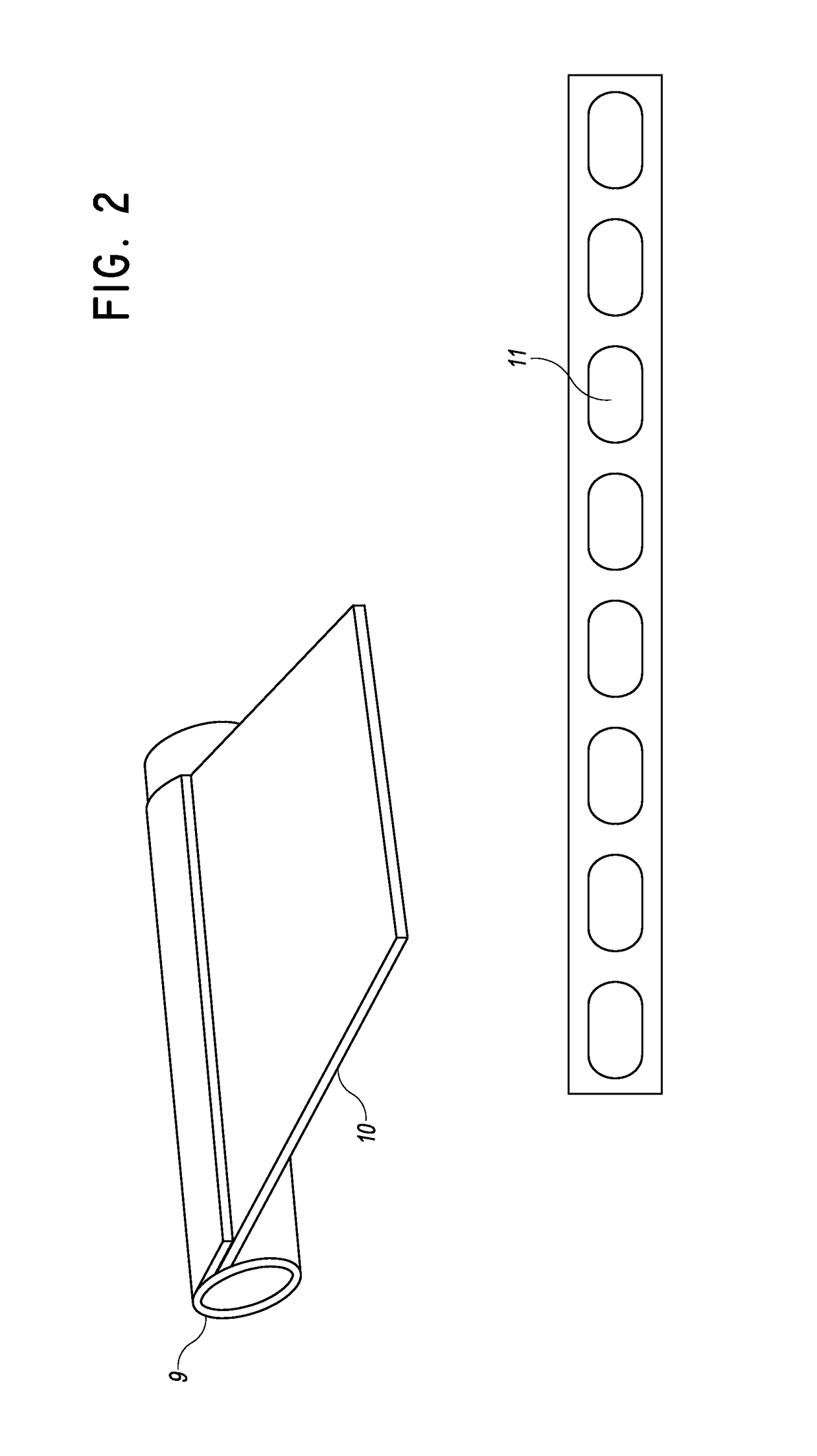Translucent plastic solar thermal collector
a solar thermal collector and transparent technology, applied in the field of transparent plastic solar thermal collectors, can solve the problems of failure of collectors fabricated from polycarbonate plastics at anywhere near the temperature required for dhw applications, structural defect manifested, and none of the inventions based on high clarity, high strength plastic polycarbonate ever had commercial success, etc., to achieve the effect of reducing manufacturing costs, reducing manufacturing costs, and reducing manufacturing costs
- Summary
- Abstract
- Description
- Claims
- Application Information
AI Technical Summary
Benefits of technology
Problems solved by technology
Method used
Image
Examples
Embodiment Construction
[0040]Certain features, aspects and advantages of the present invention relate to a highly durable, cost-effective version of a solar collector product featuring low-light transmission. In some configurations, the solar collector utilizes a translucent FRP as the material of construction. The solar collector can be based on a high-strength, high-temperature resin that may include about 30% glass content. The collector can feature low-light transmission and can be based on a system that absorbs energy from the sun and converts it to large amounts of heat. The low-light transmission of the material in the collector arises from the color of the resin, the glass loading, and / or the addition of a dye to achieve the final desired effect. Dye can be added when desired in an otherwise moderately clear product or to overcome an otherwise undesired visual effect, e.g., as may be desired in the product when an even higher glass fiber content is used to strengthen the base material.
[0041]Low li...
PUM
| Property | Measurement | Unit |
|---|---|---|
| spectrophotometric wavelength | aaaaa | aaaaa |
| spectrophotometric wavelength | aaaaa | aaaaa |
| spectrophotometric wavelength | aaaaa | aaaaa |
Abstract
Description
Claims
Application Information
 Login to View More
Login to View More - R&D
- Intellectual Property
- Life Sciences
- Materials
- Tech Scout
- Unparalleled Data Quality
- Higher Quality Content
- 60% Fewer Hallucinations
Browse by: Latest US Patents, China's latest patents, Technical Efficacy Thesaurus, Application Domain, Technology Topic, Popular Technical Reports.
© 2025 PatSnap. All rights reserved.Legal|Privacy policy|Modern Slavery Act Transparency Statement|Sitemap|About US| Contact US: help@patsnap.com



